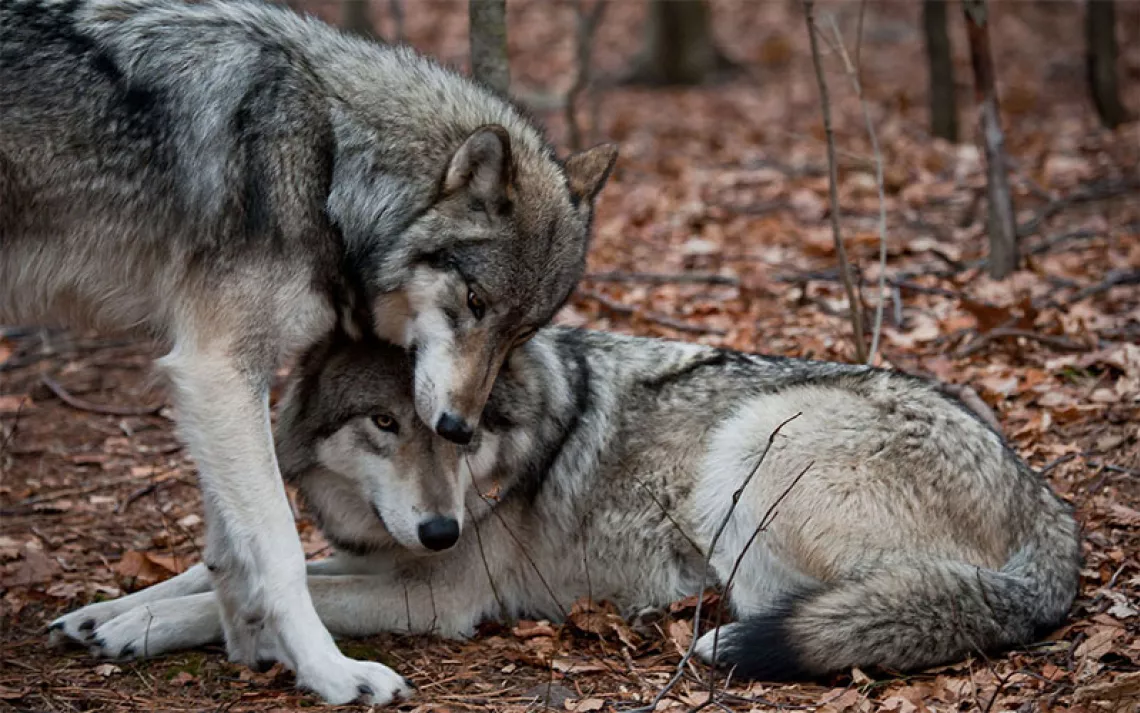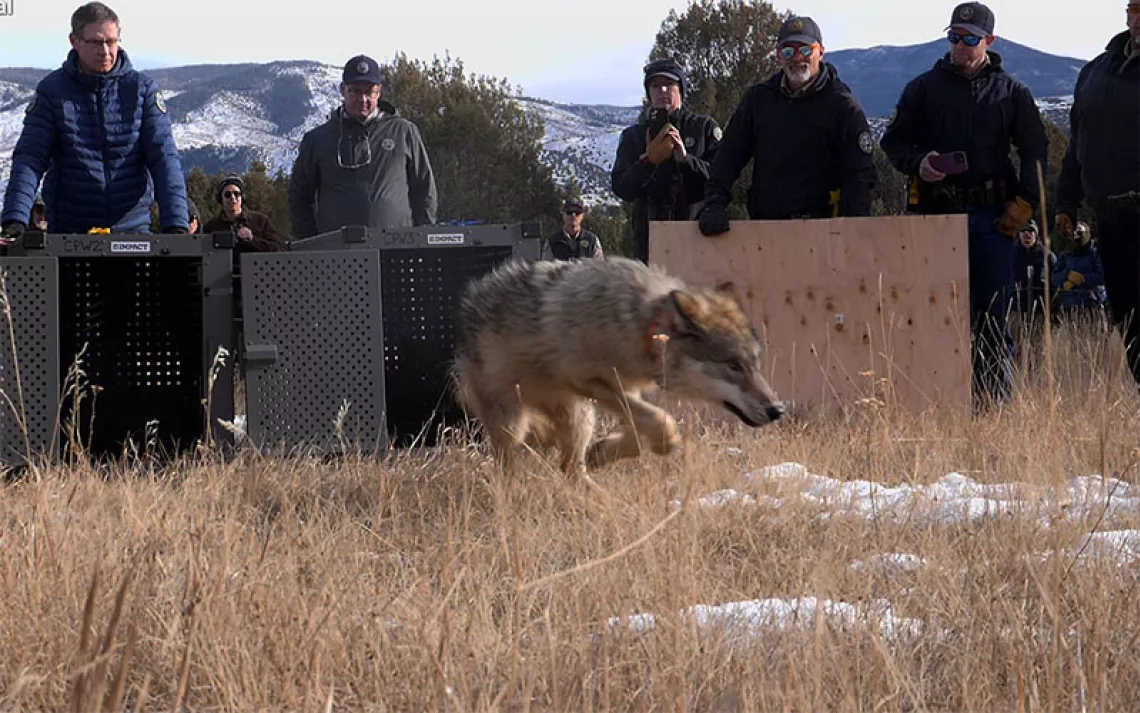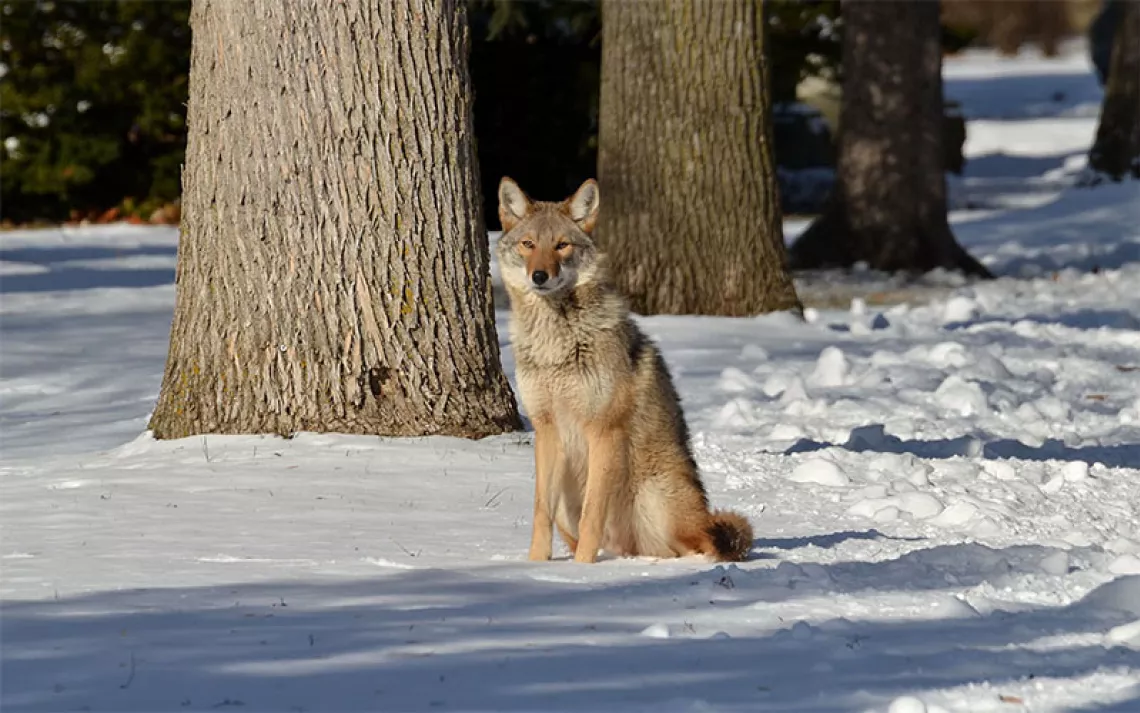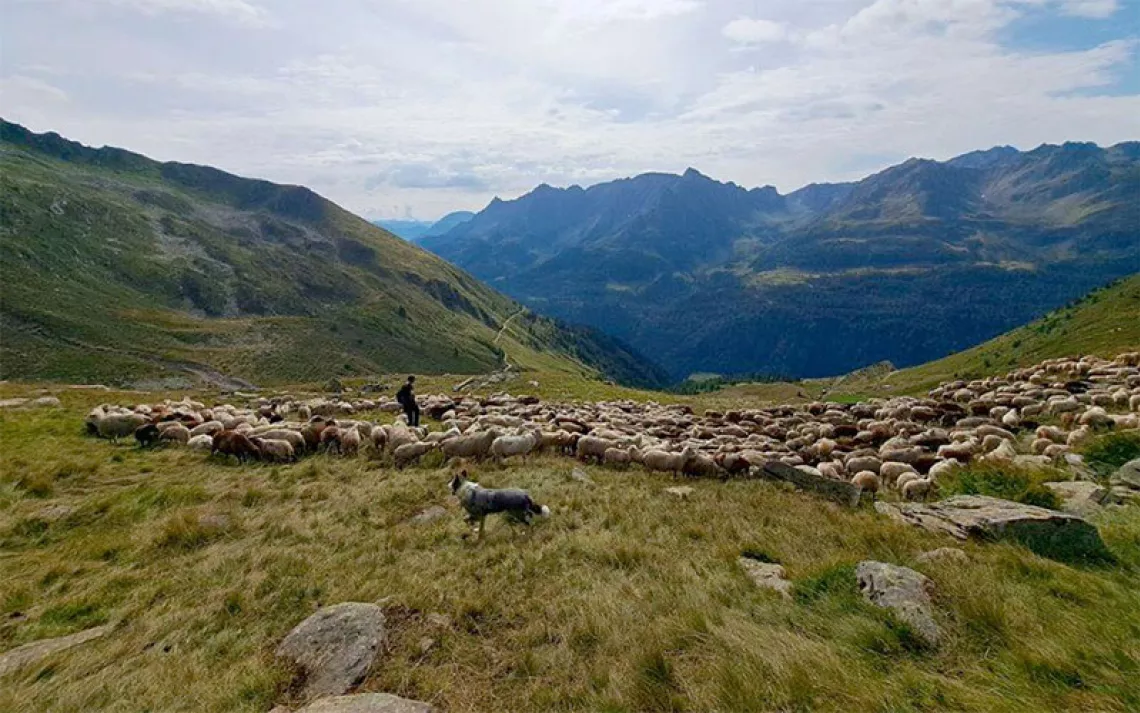Bringing Wolves Home
Delia Malone helped restore wolf populations to Colorado using the ballot box
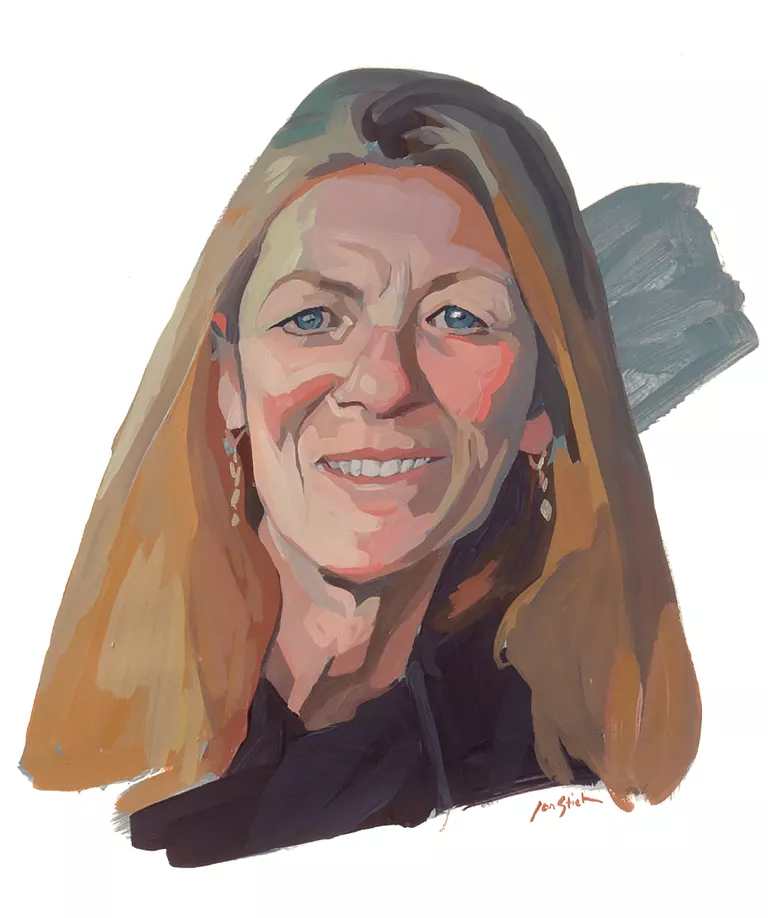
Illustration By Jon Stich
I started thinking about wolf reintroductions in the 1990s, when a friend of mine asked if I’d be interested in working with an organization called Sinapu. The group’s sole mission is to restore wolf populations to the Southern Rockies. I decided to get involved. As an ecologist and a teacher, I used my expertise in education to speak with ranchers about coexisting with wolves and give presentations to the public.
In 2006, the Colorado Parks and Wildlife Commission publicly opposed wolf reintroductions to the state but supported wolves arriving on their own. I think most of the wolf advocates thought, “Yeah, wolves will naturally make it down to Colorado.” But it turned out that few wolves ever made it across Wyoming. They were nearly always killed.
Six years later, a former student of mine who was the director of the Colorado Chapter of the Sierra Club asked if I’d be interested in running for an open seat on the chapter’s steering committee. I got it, and when I became the wildlife chair in 2015, I thought that it would be a huge opportunity to engage Sierra Club members and have some serious clout to get behind wolf reintroduction, because the issue had kind of floundered.
Not long after, in 2016, the governors of Colorado, New Mexico, Arizona, and Utah came together to oppose the movement of Mexican gray wolves north of I-40 into Colorado and Utah. That’s when I realized that wolves will never get to Colorado on their own. We needed to do something different. I worked with other chapter leaders to create an educational campaign focusing on the importance of wolves on the landscape. We showed documentaries in high schools and on college campuses. We got Michael Robinson, a wolf expert at the Center for Biological Diversity, to do a talking tour around the state, giving presentations on why Colorado needs wolves.
Around that time, a guy named Mike Phillips, then a Montana state senator who was instrumental to wolf recovery in Yellowstone, called and asked if we could meet. We started to build a coalition of volunteers to advocate for getting a measure on the 2020 ballot in Colorado that would require the state to bring wolves back. We held tabling events in front of pet shops, went to grocery stores, and did public presentations. We’d take a sign-up sheet and ask people if they wanted to help by holding signs or collecting signatures.
Passing the ballot measure turned out to be easy. The hard part is keeping wolves protected and safe. In September, state wildlife officials had to capture and relocate an entire family of wolves at the behest of one rancher who wanted to kill them because he was having issues with predation. He wasn’t using nonlethal measures of deterrence and refused to cover his carcass pits, which likely attracted the wolves.
Now I’m working with other groups to ask the wildlife commission to require that ranchers use nonlethal strategies—like range riders, fox lights, and electric fencing—before they can be compensated by the state for wolf predation. If that doesn’t work, we’ll advocate for getting another ballot measure passed. There are glimmers of hope—some ranchers are starting to come around.
I long for the day when I hear the wolves howl in my backyard, a roadless area. But if I don’t, it’s OK. I’m joyous just knowing that they’re starting to bring the wild back to Colorado. We’ve lost that. Yes, it’s beautiful here. Yes, the mountains are gorgeous. Yes, the trees are wonderful. But without wolves, that sense of wildness is not there.
 The Magazine of The Sierra Club
The Magazine of The Sierra Club
